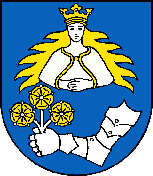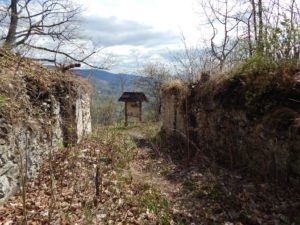Tiszolc

Who says that we don’t appreciate the smaller ruins? Their stones can be overgrown by bushes but once they had their role in our history.

Tiszolc (Tisovec, Theissholz, Taxovia) is located in Gömör County, in the middle of the Upper Lands/Horná Zem/Felvidék, in Slovakia. The small town is 35 km to the north of Rimaszombat (Rimavská Sobota) on the border of the historical county of Zólyom and Gömör-Kishont. It is just a few kilometers from the important mining town of Breznóbánya (Brezno, Bries, Briesen). You can see the ruins of Tiszolc Castle on the top of the 893 meters high Castlehill.

The stone castle was built after the Mongolian invasion of 1241-42 on the site of the previous earthen fort. The castle belonged to Ajnácskő Castle (Hajnacka, Pirsenstein) and in spite of the distance, it was controlled from that location. In the beginning, it was a German-Hungarian miner’s settlement, its name comes from the German word “Theisholz” which means “Tiszafa” in the Hungarian language and is “yew” in English. The mines in its hills were renowned for the iron, magnetic ore, and silver.

László, the Archbishop of Kalocsa was the owner of the town and the castle in 1334. This year was the first mention of the place in King Róbert Károly’s document, as “Thyzolch”. The next owner was Chief Comes Széchy Tamás who inherited it from the Priest. The Bohemian Czech Hussites appeared there and took the castle in 1442 but after 1458 King Matthias Corvinus drove them out. Many noble families moved into Tiszolc during the 16th century, including the Losoczy, the Guti Országh, and later the Kubinyi, the Forgách, and the Nyáry families.

We know that the infamous Feledi Istók was the lord of the area in 1526 and whose nickname was Iron Istók because he had so much iron ore mined and cast that he became famous for his trade and infamous for other deeds. When Istók died, the lord of Murány Castle, an even more wicked robber knight, Basó Mátyás took it from him. He was sitting in Tiszolc Castle like a spider in his web waiting for the little flies, the travelers, and traders, passing by. In the meantime, he was forging money in the dungeons. Allegedly, he had his treasures hidden in Tiszolc. (Please, note that I use the Oriental name order for Hungarians where family names come first.)

The army of Bebek Ferenc attacked Basó to stop the illegal activity in 1548. He and the county’s noble army destroyed the castle and hung the dark knight. The king had the castle rebuilt and placed a garrison there. When the Turks showed up in 1594, they sacked it and took away a Protestant priest called György as a hostage. The Ottomans visited the area many times looting and burning the land and kept attacking Tiszolc. Two years later the place was mentioned as a town and it had the right to hold a market. There were 38 houses there, 3 of them belonged to peasants. The town was prospering. The Kubinyi family built a paper mill there in 1663. After the area was liberated from the Ottomans, the castle lost its strategic function very quickly.
The town suffered a lot in 1623 due to the plague and then there was a natural disaster in 1687 when the locusts caused major destruction. The last time the castle was mentioned was when the troops of Prince Thököly Imre were close to its walls at the end of the 17th century, although they couldn’t take the castle. Yet, it might have been on the rebel’s side later because the Imperial army had to lay siege against it.
The mercenaries took the castle by force and destroyed the walls to the ground. During the Revolution of Prince Rákóczi Ferenc II (1704-1711), Tiszolc was the place where cannonballs were cast for the rebel’s army as the first iron smelting factory of the Upper Lands was established there.

The plague of 1710 decimated the population and perhaps because of its role in Rákóczi’s War of Independence, the town soon lost all of its privileges. Today, while one can see only a few white cliff remnants of the castle’s walls, it offers a spectacular view of the Valley of the Rima River.

Dear Readers, I can only make this content available through small donations or by selling my books or T-shirts:
Please, feel free to support me with a coffee here:
You can check out my books on Amazon or Draft2Digital, they are available in hardcover, paperback, or ebook:
https://www.amazon.com/dp/198020490X or at https://books2read.com/b/boYd81

My work can also be followed and supported on Patreon: Become a Patron!http://Become a Patron!
[wpedon id=”9140″]

https://hungarianottomanwars.myspreadshop.com/all
















